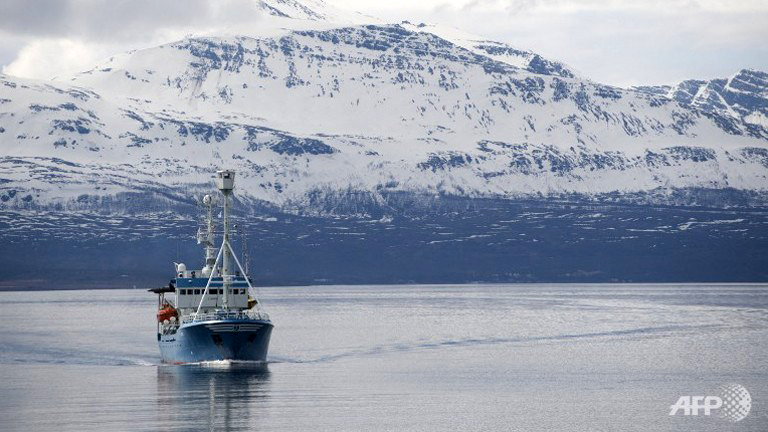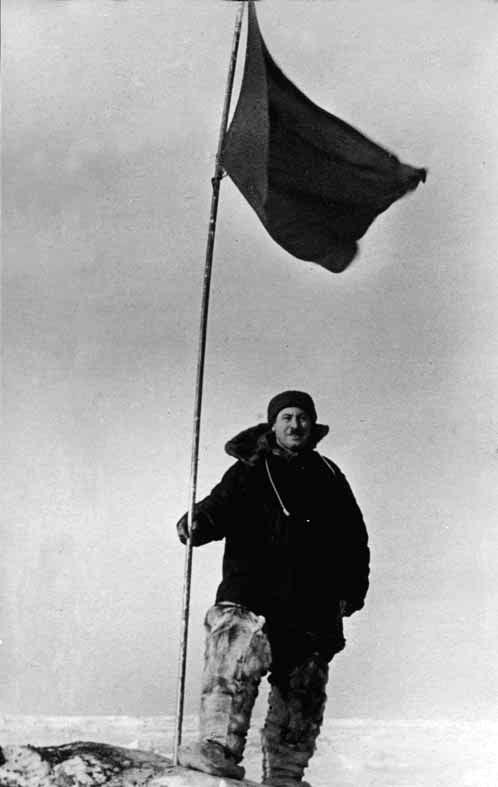“Russia has ordered the urgent evacuation of the 16-strong crew of a drifting Arctic research station after the ice floe that hosts the floating laboratory began to disintegrate, officials said on Thursday. Natural Resources and Ecology Minister Sergei Donskoi set a three-day deadline to draft a plan to evacuate the North Pole-40 floating research station. ‘The destruction of the ice has put at risk the station’s further work and life of its staff,’ the ministry said in a statement.
The station is currently home to 16 personnel including oceanologists, meteorologists, engineers and a doctor. It conducts meteorological research, monitors environmental pollution and conducts a number of tests. If the situation is not addressed, it may also result in the loss of equipment and contaminate the environment near Canada’s economic zone where the station is currently located, the ministry added.
The floating research laboratory will be relocated to Bolshevik Island in the Russian Arctic with the help of an ice-breaker. ‘The ice floe has crumbled into six pieces,’ said Arkady Soshnikov, spokesman for the Arctic and Antarctic Research Institute. ‘The people are not at risk but it is not possible to work in these conditions. The ice may disintegrate so a decision has been taken to evacuate’ the station, he told AFP. The station was located at 81 degrees North and 135 degrees West as of early morning Wednesday, May 22.
Scientists point to increasing signs of global warming in the Arctic, which is being significantly affected by climate change. The UN weather agency said this month that the Arctic’s sea ice melted at a record pace in 2012, the ninth-hottest year on record. Vladimir Sokolov, who oversees the floating station at the Saint Petersburg-based Arctic and Antarctic Research Institute, said the ice was disintegrating due to climate change. ‘This has made the Arctic research significantly harder – the ice has become thinner and the weather conditions more difficult,’ he told AFP. He said it was important to continue studying the Arctic. ‘The Arctic Ocean, just like the Antarctic, is the ‘refrigerator’ of the Earth. It significantly affects the climate of our planet.’ ‘If this ‘refrigerator’ has a glitch and we do not know about it, it leads to mistakes in forecasts and affects the quality of decision-making on entire territories.’
Russia, which has always prided itself on its exploration of the energy-rich region, established the first floating station, the North Pole-1, in 1937. Funding for floating stations dried up after the collapse of the Soviet Union but resumed under strongman Vladimir Putin who has said Russia intends to expand its presence in the Arctic. The first floating Arctic station of post-Soviet Russia, the North Pole-32, was put together in 2003. The crew of that station had to be rescued when the ice floe beneath it broke up in 2004. At a meeting with the crew of the rescued North Pole-32 station, President Putin stressed the importance of the Arctic research: ‘For us, for such a northern country like Russia communications in the North are very important both economically and militarily,’ Putin said in 2004.
Russia alarmed its Arctic neighbours, including Canada and Norway, when it planted a flag on the ocean floor under the North Pole in 2007 in a symbolic staking of its claim over the region. The five Arctic nations that also include Denmark and the United States are locked in a tight race to gather evidence to support their claims amid reports that global warming could leave the region ice-free by 2030” (source).





